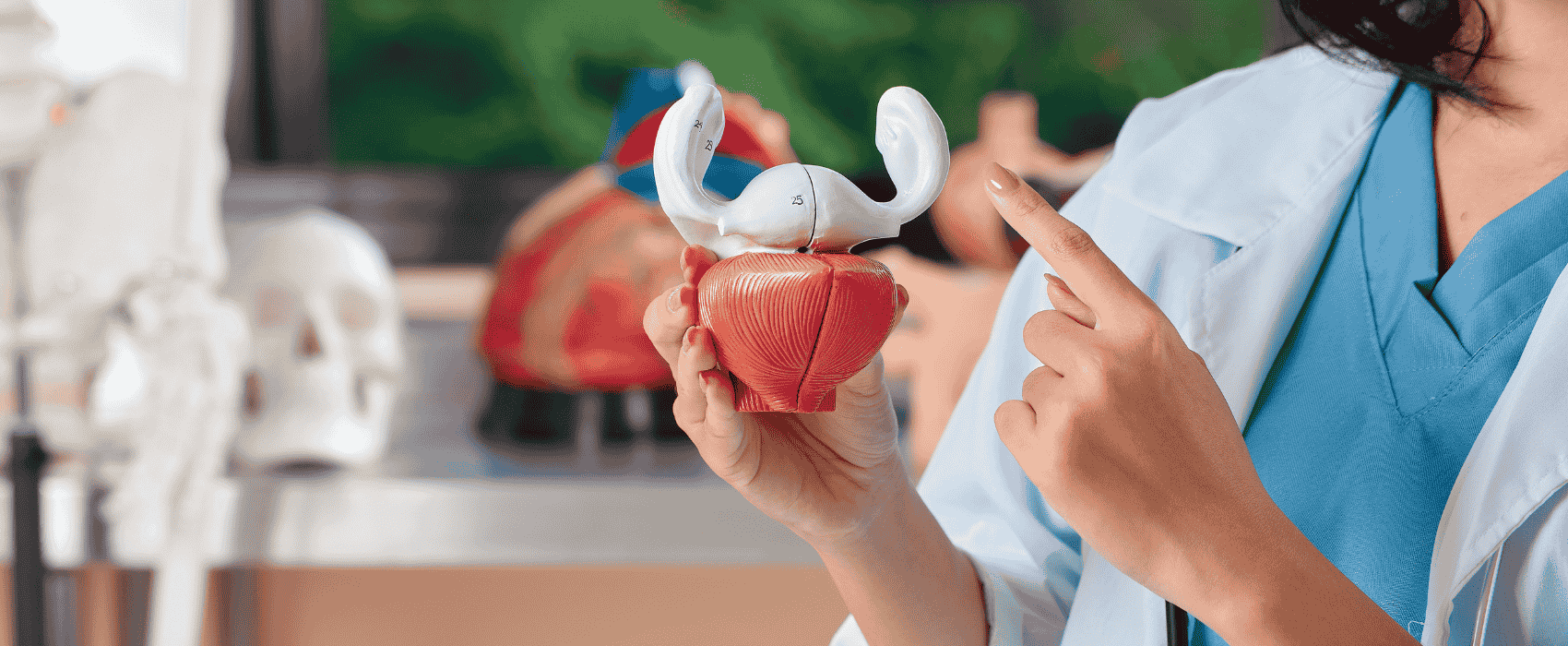
Urinary incontinence is one of the most common urologic conditions and affects up to 25 million Americans across the country. Urinary incontinence is a term that’s used to describe the involuntary loss of bladder control. Incontinence can be mild or severe, chronic, or temporary, and occurs as a symptom or side effect of several different conditions. While it’s not uncommon to experience incontinence at some point, when it happens it can severely impact your quality of life. To help, here’s everything you need to know about incontinence.
The Difference Between Continence and Incontinence
Your urinary tract system works to filter out blood and create urine as a waste product. This process starts in the kidneys and ends in the bladder, where urine is stored until you use the bathroom. The filtration process is done automatically in healthy individuals and when the bladder is full, you make a voluntary decision to go to the bathroom and void. Having control of the ability to empty your bladder is called continence. Incontinence is therefore defined as the unintentional passing of urine. This can happen for several reasons but is most commonly associated with the muscles and nerves that help your bladder hold and release urine.
Causes of Urinary Incontinence
There are many things that can cause someone to experience urinary incontinence. Some of them include urinary tract infections, pregnancy or childbirth, menopause, smoking, being overweight, prostate surgery, benign prostatic hyperplasia, diabetes, multiple sclerosis, Parkinson’s disease, anxiety, certain medications, and hysterectomies. If you’re experiencing symptoms of any type of urologic condition, the best way to avoid further complications is to make sure that you’re getting the proper treatment. Since urinary incontinence is often a symptom of another condition, getting a medical diagnosis is essential to addressing the underlying condition.
Duration of Incontinence Issues
There are several factors that affect the severity and duration of urinary incontinence. Certain foods or beverages can trigger incontinence, or it could be a result from an underlying condition. Due to these differences, urinary incontinence can either be temporary or permanent.
Temporary Urinary Incontinence
When someone experiences short bouts of urinary incontinence, it’s considered temporary urinary incontinence. This can occur due to certain foods or beverages like alcohol, caffeine, chocolate, certain artificial sweeteners, citrus fruits, spicy foods, tomato-based products, or carbonated drinks, which act as triggers. Temporary urinary incontinence can also occur due to certain medications or temporary ailments like UTIs and constipation. Oftentimes, this can be resolved by limited or omitting triggers, changing medications, or treating the underlying condition.
Chronic Urinary Incontinence
Chronic urinary incontinence tends to last longer and is due to a more severe underlying condition or change in the body. As you age, your bladder muscles weaken, and continence can become more difficult. Pelvic surgeries, cancers, neurologic disorders, or pregnancy can result in chronic incontinence.
Types of Urinary Incontinence
Urinary incontinence can also present itself in different ways. There are several different types of incontinence, which should be managed accordingly. Some of the types of incontinence include stress, urge, overflow, functional, or mixed.
Stress Incontinence
Stress incontinence occurs when there is added pressure placed on your bladder. Urine may involuntarily leak when you sneeze, cough, exercise, laugh, or lift heavy objects. This can occur due to pregnancy, age, medication use, and being overweight.
Urge Incontinence
Urge incontinence, also referred to as overactive bladder, occurs when you have a sudden and intense urge to urinate and are unable to find a bathroom in time. This type of incontinence can occur due to nerve damage, certain infections, neurologic conditions, stroke, diabetes, bladder or kidney stones, and more. It is often paired with nocturia and many people who experience overactive bladder have to use the bathroom eight or more times throughout the day.
Overflow Incontinence
Overflow incontinence occurs when you’re not able to completely empty your bladder, making you more susceptible to leakage throughout the day. This is more common in men and can be caused by weakened muscles, constipation, tumors, nerve damage, and medication use.
Functional Incontinence
Functional incontinence is when you experience the involuntarily loss of urine due to physical or mental impairment, such as arthritis, which makes it difficult to get to a bathroom in time.
Mixed Incontinence
Mixed incontinence is the term that refers to an individual who experiences both stress and urge incontinence simultaneously. It’s more common in women but can also affect men.
Treating Urinary Incontinence
Luckily, there are plenty of different treatment options to manage urinary incontinence. If you experience any symptoms of urinary incontinence, talk to your urologist about undergoing diagnostic testing. This will allow you to better understand the type of urinary incontinence you’re experiencing so that you can properly treat or manage it. Some of the treatment options for urinary incontinence include the following.
Lifestyle Changes
The first approach to treatment will be making lifestyle changes. This approach is preferred, as it reduces unnecessary complications from medications, surgeries, or procedures. A few of the best lifestyle changes to address urinary incontinence include controlling your fluid intake throughout the day, eliminating triggering foods and beverages, double voiding, bladder training, and performing ongoing pelvic floor exercises to help strengthen your urethral sphincter and bladder-supporting muscles.
Medication
When lifestyle changes aren’t enough to treat urinary incontinence, your doctor may recommend trying certain medications. There are several different medications available that can help calm overactive bladder, relax bladder muscles and increase volume, reduce constriction during voiding, and increase muscle firmness. Always make sure that you communicate your current medications and if you experience any side effects, tell your doctor immediately.
Surgery
There are a few different types of surgeries that can be performed to treat urinary incontinence. Colposuspension helps to lift the neck of your bladder and secure it in a more preferable place to reduce incontinence. Sling surgery is performed to help support the bladder and reduce added pressure that causes stress incontinence. Both of these have proven to be effective at treating incontinence, but as with any surgery, they come with added risks.
Urethral Bulking Agents
Urethral bulking agents can be used to enlarge the urethral walls and help keep the urethra closed during times of inactivity. This is less invasive than surgery, but some people experience incontinence again as the agent may not be effective for everyone. When the bulking agents eventually wear off, you will need to repeat the process to continue benefiting.
Artificial Urinary Sphincter
In some cases, your doctor may recommend an artificial urinary sphincter. This helps you regain control of the flow of your urine, but it’s often seen as a temporary solution.
Botulinum Toxin Injections
Botox, or botulinum toxin, can be used to treat incontinence. The Botox is injected directly into your bladder, which helps relieve individuals from urge incontinence and overactive bladder. As with urethral bulking agents, this process needs to be repeated over time as the agent wears off. However, this is a common treatment as the process is simple and fast.
Nerve Stimulation
You can also use nerve stimulation to treat urinary incontinence. This can be done through sacral nerve stimulation or posterior tibial nerve stimulation. Both procedures help you gain back control of your muscles, which can reduce the occurrence of incontinence.
Clean Intermittent Catheterization
If you’re unable to find relief from the above treatment options, or simply want to forego surgery or repeated procedures, you can treat urinary incontinence with clean intermittent self-catheterization. This allows you to fully empty your bladder at regular intervals throughout the day, so you avoid experiencing incontinence symptoms. Talk to your doctor if you’re interested in learning more about intermittent catheterization.
Absorbent Pads
For those suffering from mild cases of incontinence, using absorbent pads throughout the day can reduce embarrassing accidents or unnerving situations. There are plenty of great, discreet products available for you to choose from.
Treating urinary incontinence is important to improving your overall quality of life and addressing any underlying problems. If left untreated, urinary incontinence can lead to a number of complications that increase in severity over time. Some of these problems include urinary tract infections that progress to kidney infections, cancer, nerve disorders, frequent skin problems, a lower quality of life, and a negative effect on mental health. If you’re suffering from urinary incontinence, don’t hesitate to talk to your doctor today. To help you manage any temporary or chronic incontinence issues, Byram Healthcare can help. We carry a wide selection of high-quality incontinence products that can help you take back control of your life. To learn more, or to speak with a professional regarding incontinence questions and ongoing management, contact Byram Healthcare today.




